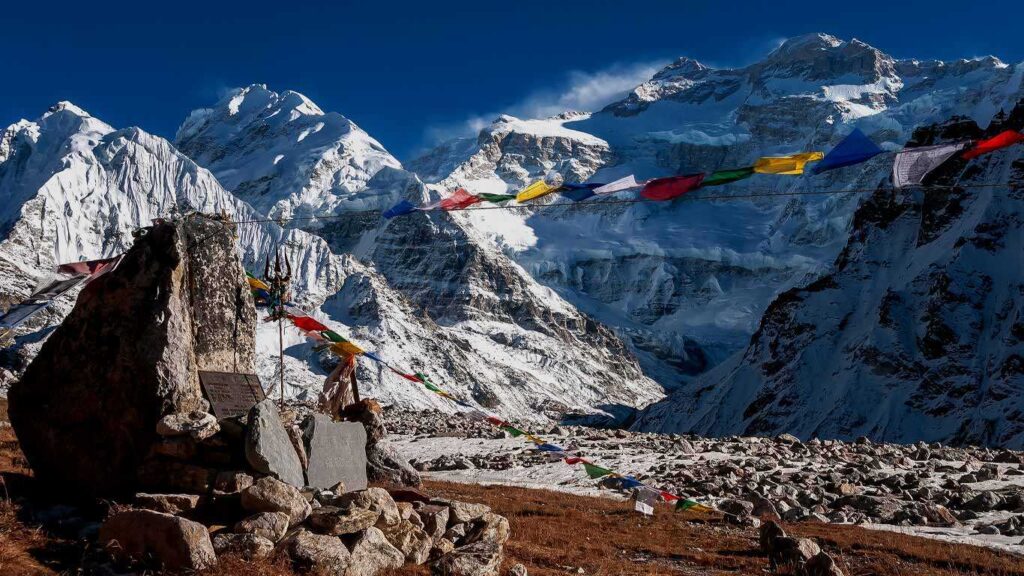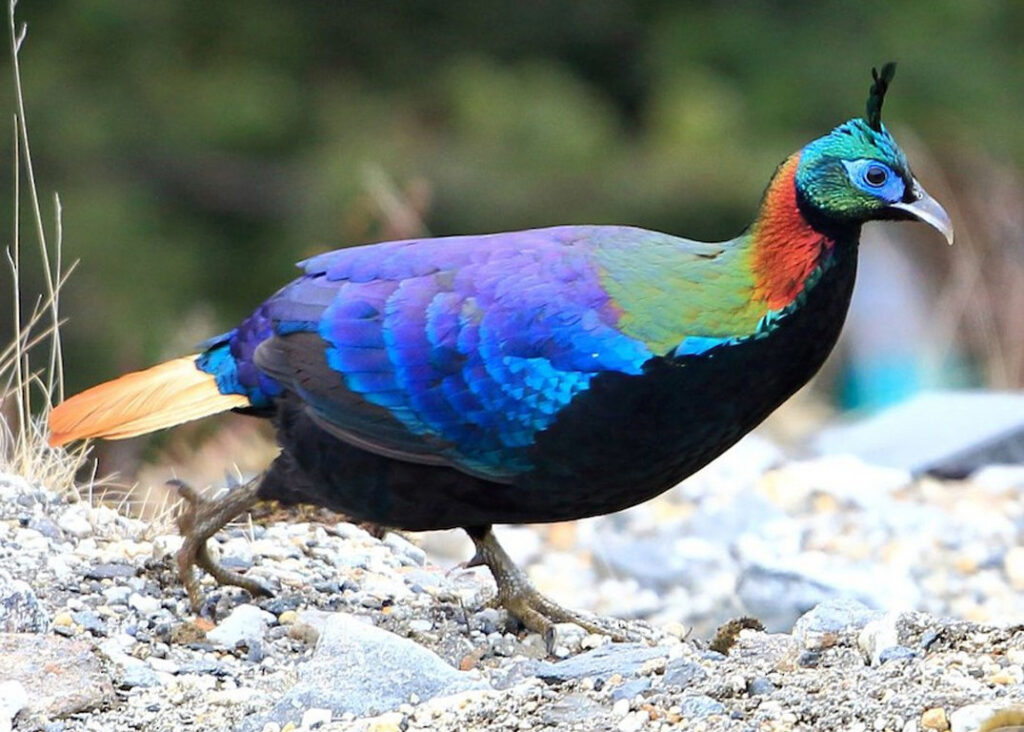Kanchenjunga Conservation Area is a protected area of Nepal located in the eastern region of the Himalayas. Kanchenjunga conservation area is named after the second-highest mountain in Nepal. The conservation area was established in March 1998. Kanchenjunga conservation area lies in the northeast corner of Nepal at Taplejung district. It is mainly renowned for its high peaks and glaciers.
The area touches the boundary line of Kanchen Dzonga National Park of India on the northern side. Quomoloangma National Park Preserve of Tibet in the southern part. It touched Sankhuwasabha district to the west, the Kanchenjunga conservation area ranges from an altitude of 1200m to 8583m. Kanchenjunga conservation area is spread over 2035 sq km. it is the place to explore to Himalayas.
Kanchenjunga Conservation Area Features
It presents contrasting ecosystems, varying between alpine grasslands and subtropical forests from the down valley of rivers to the glacial moraine with rugged slopes. The area is the habitat of vegetation, wildlife, and numerous animals such as the musk deer, black bear of the Himalayas, snow leopards, boar red panda, and others.

People who live in these high-altitude regions have to adapt to the difficult climate and rugged, mountainous landscape. The extreme elevations present unique challenges related to the environment and geographic features of the area. The altitude makes the places relatively unpredictable, with low primary productivity and high environmental fragility in comparison to the land area. Like the midhills, the high-altitude areas are inhabited by different ethnic groups and speak a variety of languages and dialects.
How to get there
Visitors can get a route through.
Also Read: Shuklaphanta National Park, Far-Western Wildlife Heaven of Nepal
Kathmandu – Suketar by air, Kathmandu – Birtamode- Illam- Phidim – Taplejung by bus.
Kanchenjunga Circuit Trek
The trek is an all-rounder trip literally. The trip involves trekking all through the nor tans the south side trails of the mountain. this trek is the ultimate answer to how to reach Kanchenjunga.

Visitors can witness the locals from Rai, and Limbus, to Tibetan Buddhist villages where visitors can explore the Nepali culture, hospitality, and lifestyle while doing this trek.
Kanchenjunga Conservation Area Entry Permit
The conservation area entry permit fees contribute to conservation efforts, community development projects, and infrastructure improvements in the area.
The exact fee for the conservation area permit can vary so it is advisable to check with your trekking agency or the relevant authorities for the current rates. The permit costs 2000NRs and there is no time limit connected to it.
Restricted area permit fees
The permit fees for the restricted area of the Kanchenjunga trek can vary based on the duration of the visitor’s trek and the time of year.
You may also like: Langtang National Park: Things to Know
It is necessary to check the latest fee structure with your chosen trekking agency or the Nepal Tourism Board for the most accurate and up-to-date information. The restricted area permit fees costs 10 USD per week.
Kanchenjunga Conservation Area Flora and fauna
The area has more than about 200 species of flower plants out of which 23 species of the flower plants are endemic to Nepal. It is the homeland of 82 species of insects, 5 species of fish, 6 species of amphibians, 252 species of birds, and 22 species of mammals. Endangered species like snow leopard, and red panda, and vulnerable species like the clouded leopard, Himalayan black bear, and Assamese macaque serow are found in the Kanchenjunga conservation area.

The area is a treasure of biodiversity, boasting an impressive variety of flora and fauna. The lush forests to delicate flowers that carpet meadows. The destination is a botanical wonderland. The area is home to a multitude of tree species including oak, maple, pine, and birch. The area is home to diverse ranges of animals, including the endangered red panda and the majestic Himalayan black bear.
Activities to do in Kanchenjunga Conservation Area
Kanchenjunga Conservation Area provides a wide range of activities and attractions for visitors to enjoy. Trekking is the most popular activity in this area with several well-established routes that cater to different fitness levels and time constraints. The Kanchenjunga Base Camp Trek is one of the most challenging trek and rewarding trek in Nepal.
Kanchenjunga offers Kanchenjunga circuit trek, if you are searching for a challenging and rewarding trek then it will be the best choice. While the journey the trek will lead through the breathtaking landscapes, it provides inspiring views of the world’s third tallest mountain. the trek is a spectacular trekking experience that guides you through east Nepal. It is the most impressive landscape. It offers incredible vistas fascinating villages, and tremendous cultural diversity. You can seek spectacular mountain panorama, taste local food, and observe rai, limbu, and their culture and tradition during this trek.
Bird watching
Bird watchers would also get to know about different species of birds. If you explore the trials that wind through this natural wonder, you will be able to seek beautiful waterfalls, clear crystal lakes, and beautiful panoramic vistas of the Himalayas. The area reveals a new marvel of nature making it must must-visit destination for those who are passionate about the environment.
More: Things you don’t know about Khaptad National Park
You can do there is peak climbing, explore Yalung glacier, snow leopard tracking, red panda tracking, you can trek to Tembu Pokhari, and many other activities.
The best time to visit Kanchenjunga Conservation Area
It is a good idea to visit around autumn, from October to November. The trek is best when the weather is not too hot or cold to prevent sickness. It is best to trek when it is not raining and ideally, without wind. If you visit during monsoon, you would expect to encounter heavy rain. If want to explore the Kanchenjunga region visit in early March through mid-May and mid-October to late November.
While the monsoon season runs from late May to late September, making trekking impossible. The climate varies depending on its altitude. Monsoon season is the best experienced season in this region. During the winter season, frequent snowfalls and low climatic temperatures can be experienced.
Let our expert team at Asian Heritage Treks and Travel take care of everything — from guided tours to personalized packing tips and travel arrangements.
Plan My Kanchenjunga Trip







